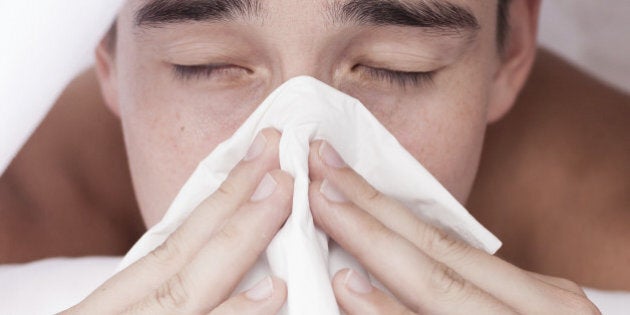
It's that time of year again: flu season. Once again, the influenza virus has showed up in Canada threatening up to 20 per cent of the population. In a normal year, millions of people are infected annually with thousands needing hospitalization and hundreds succumbing to the infection.
Thankfully, for nearly half a century, we have had the flu vaccine to help us fight off the illness and stay safe. The composition of the vaccine has changed over the years to make it safer and more effective but the overall function has remained the same. By introducing non-infectious viruses into the body, the immune system can learn what the enemy looks like and develop a trained response should an invasion occur. The vaccine is usually quite effective and can help over half of the population taking the shot fight off the virus and remain healthy throughout the season.
There is a problem, of course. For the vaccine to be effective, it has to perfectly mimic the viruses in nature. This is actually harder than one might think as influenza is the master of evolutionary disguise.
There are two ways flu can change the way it looks, and both can lead to headaches for professional and patient alike. The first is through sharing of the genetic material between viruses. This process, called a shift, leads to an entirely different strain with new properties. The other is through changes in the genetic information within the virus itself. It's called a drift although most call it a mutation. When this occurs, the virus looks similar yet changed enough to evade an immune response.
Due to this constant evolution, the vaccine has to regularly change as well thus the need for a yearly shot. Unfortunately, knowing exactly which new evolved version of the virus will hit the hemisphere is complex and at times requires some 'guesstimation.' As a result, twice a year, the World Health Organization convenes a meeting of flu experts to determine which strains should be included in the vaccine.
When these experts do meet, they know the decision isn't a light one to make. Once the recommendations are finalized, a six-month process initiates for which there is no turning back. The strains are grown up in labs, mass produced to accommodate the millions of empty vials, tested for composition, efficacy, and most of all safety. To ensure the vaccine can be taken by the majority of the population, several different forms of the vaccine are manufactured to account for allergies and other sensitivities.
For the most part, the team gets it right and the vaccine is spot on. However, at times, the prognostications miss the mark and the strain selected is different from the one that hits. It's a painful moment for the experts but it can be even more frustrating if data reveals they were initially correct in their assessment but times and trends had somehow changed during those six months.
This scenario was the sad reality regarding this year's flu vaccine. When the recommendations were made in February of 2014, the right strains of the virus -- an H3N2, the pandemic H1N1, and two influenza B viruses -- were chosen. But in between February and October, the H3N2 virus had gone through a drift. This left the vaccine only half as effective as expected. There was some good news as the other three strains were still on the mark and offered appropriate protection. Yet as the majority of infections were expected to be caused by H3N2, the experts feared this season would be worse than normal.
So far, that prediction has come true. Over the last few weeks, as the holiday season unfolded, several areas in the country experienced this higher than normal activity; some record breaking. The resultant spike in cases has led many to worry about whether they will be safe from the flu and also whether they should consider the vaccine. The latter is a personal choice; but the former can be a definitive yes with proper hygiene.
Regular hand washing with soap and warm water, the use of 62-70 per cent alcohol hand sanitizer will help significantly as will maintaining a six-foot distance from anyone who might be shedding through coughs and sneezes. Should that not be possible, one can also make their own fashion statement by choosing fashionable protective equipment.
Unlike the gowns featured in hospitals, wear natural fibres such as cotton to trap the virus. As for a mask, ensure to have a woollen scarf to protect your respiratory tract. Not only will it prevent infectious drops from getting into your nose and mouth, wool has naturally antimicrobial properties to help keep you safe.
ALSO ON HUFFPOST:
